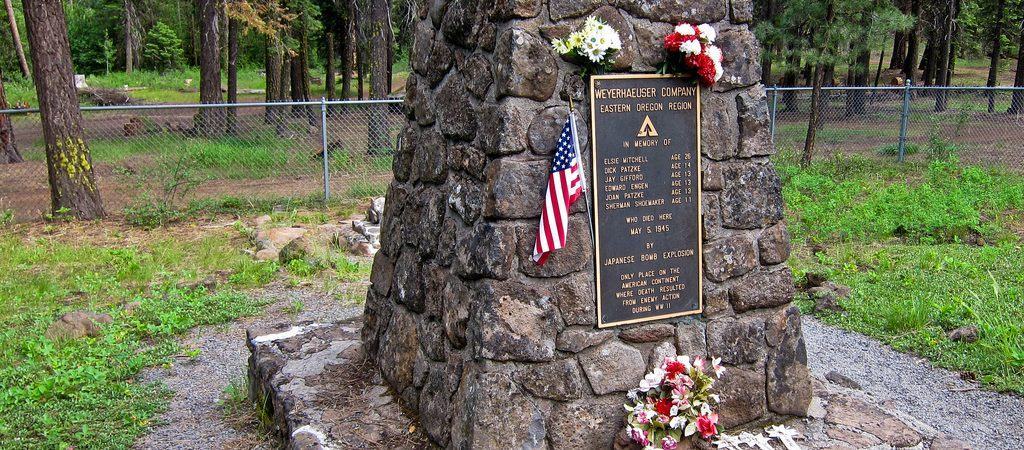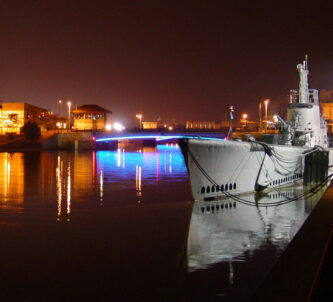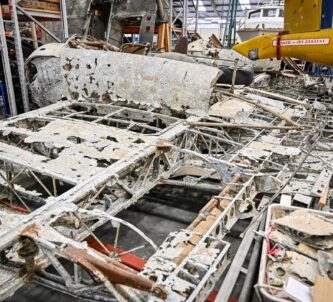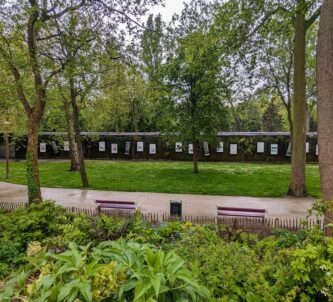I had heard of the Japanese WW2 balloon bomb campaign, but until I was reading David Hambling’s new book, Swarm Troopers – How small drones will conquer the world *, I hadn’t been aware that there had been civilian casualties.
In fact these were the only deaths on the continental United States caused by enemy action in WW2.
The Mitchell story is tragic.
Reverend Archie Mitchell, his pregnant wife Elsie, and five of his Sunday school students drove out to the woodlands near Bly, in southern Oregan for a picnic on 5 May 1945. While he parked the car, the others set about exploring the area.
“As he turned off the engine, Archie heard his wife call to him to look at what they had found. He observed the group huddled around some foreign object and saw one of the children reach for it. Before he could even step out of the car, an explosion shattered the serene morning. Archie Mitchell was the sole survivor.” – US Forest Service
So what was it the children had picked up?
It was a Japanese Fugo (“Balloon Bomb“). The Japanese had exploited the jet stream over the Pacific to launch 9,300 Fugos in late 1944. They were made of glue-laminated mulberry paper filled with hydrogen and fitted with bombs and an altimeter which released sand-filled ballast bags if it got too low or hydrogen if it got too high on its 8,000 mile/3-day journey across the ocean. When all the ballast was gone, it released its bombs and then self-destructed.
The idea was that it would cause panic in mainland USA and hopefully start large-scale forest fires. In the event barely 300 made it to the USA and the impact was minimal. Partly because it was a winter campaign and the west coast Pacific forests weren’t dry enough for fires to get out of control, and mostly because the US government kept their presence secret, so nobody panicked and, hearing no reports, the Japanese assumed they had failed to arrive and stopped launching them.
The Mitchell Monument was erected in 1950 on the spot where the incident took place. It was funded by the Weyerhaeuser corporation who originally owned the land and the US Forest service who now maintain the site.
The Mitchell family tale is not only tragic because this must have been one of the last Fugos to be launched (the Japanese stopped sending them in April) and it was in the closing stages of the war (Japan surrendered just 3 months later), but also because Archie Mitchell was himself a war victim. He remarried and moved to Vietnam to work as a missionary, but on 30 May 1962 he was captured by the Viet Cong and never seen again.
* Hambling mentions the incident when he covers the history of UAV warfare. It’s a good book. You should read it, but you should also know this is an affiliate link – I get a cut if you buy!
UPDATE (02/04/2023): The WW2 Database has a detailed account of the Japanese Fugo campaign.
Image: CC Flickr/MichaelMcCullough








Thanks for the mention — glad you liked the book!
If you want a more local version of the fugo, take a look at “Operation Outward.” — https://www.theguardian.com/news/2016/sep/15/weather-balloons-britains-secret-weapon-weatherwatch
Unfortunately IS are now making extensive use of small drones, so we may see the 21st century versions of the fugo..